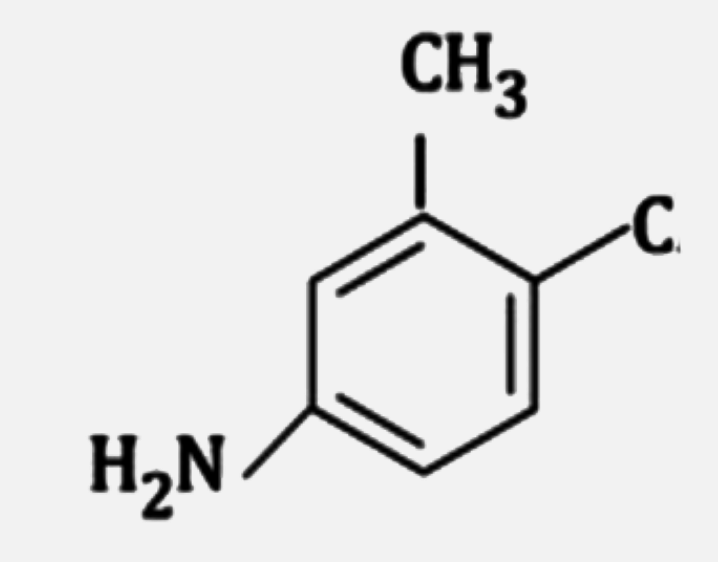Identify the compound (A),(B), and (C).
Compound (A) (C8H12)1mol−−−−−→ofH2/Pd(B)(C8H14)
Doesn not showstereoismerism⏐↓O3/Ph3PSymmetrical diketone(C)(C8H12O2)
To identify the compounds (A), (B), and (C) based on the given information, we will follow a systematic approach.
Step 1: Analyze Compound A
- Molecular Formula: C8H12
- Degree of Unsaturation: The formula for calculating the degree of unsaturation (DU) is:
DU=2C+2−H2
Substituting the values for compound A:
DU=2(8)+2−122=16+2−122=62=3
This indicates that compound A has 3 degrees of unsaturation, which could be due to double bonds and/or rings.
Step 2: Analyze Compound B
- Molecular Formula: C8H14
- Degree of Unsaturation:
DU=2(8)+2−142=16+2−142=42=2
This indicates that compound B has 2 degrees of unsaturation, suggesting it has fewer double bonds than compound A.
Step 3: Determine the Structure of Compound A
- Since compound A does not show stereoisomerism, it likely contains a symmetrical structure. Given that it has 3 degrees of unsaturation, it could contain a triple bond or multiple double bonds.
- A plausible structure for compound A could be:
CH3C≡CCH2CH2CH3
This structure has a triple bond and satisfies the molecular formula C8H12.
Step 4: Determine the Structure of Compound B
- Compound B is formed by the reduction of compound A with H2/Pd. This reduction will convert the triple bond in compound A to a double bond, resulting in:
CH3CH=CHCH2CH2CH3
This structure has 2 degrees of unsaturation and fits the molecular formula C8H14.
Step 5: Determine the Structure of Compound C
- Compound C is a symmetrical diketone that is formed from compound B upon ozonolysis. The structure of a symmetrical diketone can be represented as:
CH3C(=O)CH2C(=O)CH3
This structure has the molecular formula C8H12O2.
Summary of Compounds
- Compound A: CH3C≡CCH2CH2CH3 (an alkyne)
- Compound B: CH3CH=CHCH2CH2CH3 (an alkene)
- Compound C: CH3C(=O)CH2C(=O)CH3 (a symmetrical diketone)
- Molecular Formula: C8H12
- Degree of Unsaturation: The formula for calculating the degree of unsaturation (DU) is:
DU=2C+2−H2
Substituting the values for compound A:
DU=2(8)+2−122=16+2−122=62=3
This indicates that compound A has 3 degrees of unsaturation, which could be due to double bonds and/or rings.
- Molecular Formula: C8H14
- Degree of Unsaturation:
DU=2(8)+2−142=16+2−142=42=2
This indicates that compound B has 2 degrees of unsaturation, suggesting it has fewer double bonds than compound A.
- Since compound A does not show stereoisomerism, it likely contains a symmetrical structure. Given that it has 3 degrees of unsaturation, it could contain a triple bond or multiple double bonds.
- A plausible structure for compound A could be:
CH3C≡CCH2CH2CH3
This structure has a triple bond and satisfies the molecular formula C8H12.
- Compound B is formed by the reduction of compound A with H2/Pd. This reduction will convert the triple bond in compound A to a double bond, resulting in:
CH3CH=CHCH2CH2CH3
This structure has 2 degrees of unsaturation and fits the molecular formula C8H14.
- Compound C is a symmetrical diketone that is formed from compound B upon ozonolysis. The structure of a symmetrical diketone can be represented as:
CH3C(=O)CH2C(=O)CH3
This structure has the molecular formula C8H12O2.
- Compound A: CH3C≡CCH2CH2CH3 (an alkyne)
- Compound B: CH3CH=CHCH2CH2CH3 (an alkene)
- Compound C: CH3C(=O)CH2C(=O)CH3 (a symmetrical diketone)
Topper's Solved these Questions
- ALKENES AND ALKADIENESBOOK - CENGAGE CHEMISTRY ENGLISHCHAPTER - ALKENES AND ALKADIENESEXERCISE - SOLVED Example
62 Videos
- ALKENES AND ALKADIENESBOOK - CENGAGE CHEMISTRY ENGLISHCHAPTER - ALKENES AND ALKADIENESEXERCISE - EXERCISES
29 Videos
- ALKANES AND CYCLOALKANESBOOK - CENGAGE CHEMISTRY ENGLISHCHAPTER - ALKANES AND CYCLOALKANESEXERCISE - Archives
13 Videos
- ALKYNESBOOK - CENGAGE CHEMISTRY ENGLISHCHAPTER - ALKYNESEXERCISE - Exercises (Archives - Analytical and Desriptive Type)
4 Videos
Similar Questions
Knowledge Check
Identify the compound C in the following sequence:
(CH3)2CHCH2C≡NHCl,H2O−−−−−→compound A1.LiAlH4−−−−−→2.H2Ocompound BPC−−−−→CH2Cl2Compound CA(CH3)2CHO∣∣CCH3B(CH3)2CHCH2O∣∣COHC(CH3)2CHCH2O∣∣CHD(CH3)2CHO∣∣CCH2OHCompounds (A) and (C ) in the following reactions are
CH3CHO(i)CH3MgBr−−−−−−−−→(ii)H2O(A)H2SO4,Δ−−−−−−→(B)Hydroboration oxidation−−−−−−−−−−−−−−→(C)AidenticalBpositional isomersCfunctional isomersDoptical isomers.
Identify 'M' in the following sequence of reactions
C8H6Cl2O(M)NH3−−→C8H8ClNOBr2−−−→NaOH
View SolutionIdentify the compounds A, B and C:
H−C≡C−HH2O−−−−−−−−−−−→dil.H2SO4+HgSO4AH2−−→[Ni]B140∘C−−−−−−−→cons H2SO4C
View SolutionMeCH(A)=O+H2NOH(B)HCOONa−−−−−→Δ(C)+H2O Product (C ) is:
View Solution(A)(C4H8O)H3O⊕−−−→(B)CrO3−−−−−→acetic acid(C)CH2N2−−−→Δ(D)
The compound 'D' is
View SolutionIdentify (A), (B) and (C ).
(A),(B),(C),Isomeric alkene(C5H10)H2+Pt−−−−→2-Methyl butane
(A) and (B) Oxymercuration−−−−−−−−−→demercuration(O.M.D.) Same 3∘ alcohol
(B) and (C) Hydroboration−−−−−−−−→oxidation(H.B.O.) Different 1∘ alcohol
View SolutionGive the structure of the compounds in the following reactions
CH2=CH−CH2OHCrO3.2C5H5N−−−−−−−−→CH2Cl2[A]CH3OH−−−−→H+[B]C5H10O2KMnO4/OH−−−−−−−−−−→(Cold,dil)[C](C5H12O4)H3O+−−−→[D](C3H6O3)
View Solution
